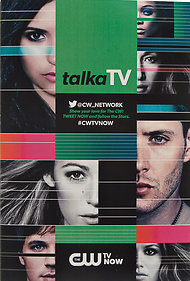David Michael Miranda, a Brazilian citizen and the partner of the American journalist Glenn Greenwald, who lives in Brazil, was held Sunday at London’s Heathrow Airport for nine hours, the maximum allowed by law, before being released without charge.
“They were threatening me all the time and saying I would be put in jail if I didn’t co-operate,” Mr. Miranda said Tuesday in an interview with The Guardian newspaper, where Mr. Greenwald is a columnist. “They treated me like I was a criminal or someone about to attack the U.K.”
On its Web site, The Guardian said the interview was the first since Mr. Miranda returned to his home in Rio de Janeiro on Monday. “It was exhausting and frustrating, but I knew I wasn’t doing anything wrong,” Mr. Miranda said. Speaking separately on Monday, he said that all of his electronic equipment, including his laptop computer and cellphone, had been confiscated. In the interview, he added that he was not allowed to call his partner, who is a qualified lawyer in the United States, nor was he given an interpreter, despite being promised one because he felt uncomfortable speaking in a second language.
“I was in a different country with different laws, in a room with seven agents coming and going who kept asking me questions. I thought anything could happen. I thought I might be detained for a very long time,” he said.
Mr. Miranda was traveling from Berlin to Rio de Janeiro. In Berlin, he had met with Laura Poitras, an American filmmaker who has worked with Mr. Greenwald on the Snowden leaks about secret American and British surveillance programs that they argue violate individual rights and liberties.
The Guardian newspaper, where Mr. Greenwald is a columnist, reported that it had paid for Mr. Miranda’s flights but that he was not an employee of the paper. “As Glenn Greenwald’s partner, he often assists him in his work,” The Guardian said in statement. “We would normally reimburse the expenses of someone aiding a reporter in such circumstances.”
In an e-mail Monday to The Associated Press, Mr. Greenwald said that he needed material from Ms. Poitras for articles he was working on related to the N.S.A., and that he had things she needed. “David, since he was in Berlin, helped with that exchange,” Mr. Greenwald wrote.
Keith Vaz, an opposition Labour Party legislator who is chairman of Parliament’s Home Affairs select committee, said he had written to the head of London’s Metropolitan Police Service, which has jurisdiction in the matter, to ask for clarification of what he called an extraordinary case.
“What needs to happen pretty rapidly is, we need to establish the full facts,” he told the BBC. “Now you have a complaint from Mr. Greenwald and the Brazilian government — they indeed have said they are concerned at the use of terrorism legislation for something that does not appear to relate to terrorism. So it needs to be clarified, and clarified quickly.”
The editor of The Guardian, Alan Rusbridger, disclosed on Monday that the British government had sent officials from Government Communications Headquarters, which is known as GCHQ and is the British version of the National Security Agency, to the newspaper’s offices in London to destroy computers containing documents leaked by Mr. Snowden. Mr. Rusbridger said that he had protested that the same information was available elsewhere, but that the officials had insisted on proceeding.
“And so one of the more bizarre moments in The Guardian’s long history occurred — with two GCHQ security experts overseeing the destruction of hard drives in The Guardian’s basement just to make sure there was nothing in the mangled bits of metal which could possibly be of any interest to passing Chinese agents,” he wrote, adding, “We will continue to do patient, painstaking reporting on the Snowden documents, we just won’t do it in London.”

Charlie Savage contributed reporting from Washington.

